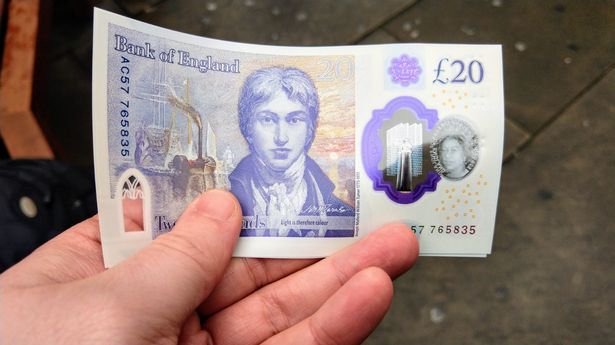The UK has had paper money for 325 years, but its days are numbered as Brits have until next September to spend any of their remaining notes – and it’s already too late for fivers and tenners.
Paper banknotes have been around for more than 300 years, but have less than 12 months
Paper banknotes have been around in the UK since 1695 – but now Brits are being warned that the notes are finally about to be phased out.
Old-style paper notes are being replaced with polymer alternatives, in a process that has been going on since 2015.
Five-pound notes were the first to start being phased out, with the final polymer note, the £50, entering circulation in June this year..
The only paper banknotes still in circulation and able to be spent are £20 and £50 ones, and now the Bank of England has warned Brits this is the last Christmas they will get to use them.
A statement from the Bank said: “Have you started Christmas shopping? Retailers can still accept your paper £20 and £50 notes until 30 September 2022.”
If you have any paper £5 or £10 notes tucked away, these sadly cannot now be spent.
Polymer banknotes were brought in because they are meant to be harder to forge and more durable than paper equivalents.
Former Bank of England governor Mark Carney – who spearheaded their introduction – said: “Polymer notes are safer than paper notes and last more than twice as long.”
‘Plastic’ banknotes are not without issues though.
Some security features on early polymer notes, including the Queen’s face, could be rubbed off with pencil erasers, and notes can shrink to a quarter of their size if ironed while inside a pocket.
But even if you the deadline has passed to spend your old paper banknotes, that doesn’t mean they are not valuable.
The Mirror reported in November that old £ 5 notes can be worth up to £300 to the right buyer.
Not all old fivers are valuable, but there are certain things that can cause their price to skyrocket.
These include things like a quirky serial number, banknotes with errors or simply being very rare.
These notes now change hands for large sums of money on auction platforms like eBay.
For example, one 1957 fiver recently sold for £113.11.
This old-style banknote was an example of the jumbo-sized version of the humble fiver.
The notes were sized 211mm by 133mm – the largest fiver ever, in circulation from 1945 to 1957.
The note had 28 bidders, and was in great condition.
A modern, polymer £5 can also be worth far more than its face value – provided it has something else that makes it valuable to a collector.
For example, one recently sold for £99 because it had a serial number of AA01 010110.
This indicates it was one of the first polymer £5 notes to be made.
The first ‘plastic fiver’, with the serial number AA01 000001 was ceremonially presented to the Queen, with just 999,998 other fivers left with the prefix AA01.
This sounds like a lot, but it is actually rare, as there are more than 400million £5 notes in circulation.
Another serial number that makes £5 notes more valuable is instantly recognizable –AK47..










Discussion about this post